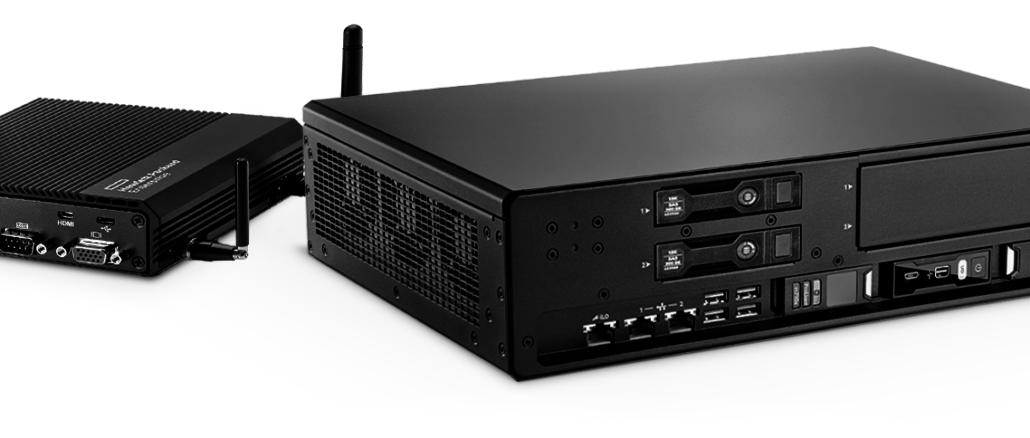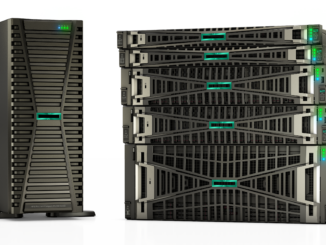
When pre-split Hewlett-Packard bought Aruba Networks three years ago for $3 billion, the goal was to create a stronger and larger networking business that combined both wired and wireless networking capabilities and could challenge market leader Cisco Systems at a time when enterprises were more fully embracing mobile computing and public clouds.
Aruba was launched in 2002 and by the time of the acquisition had established itself as a leading vendor in the wireless networking market and had an enthusiastic following of users who call themselves “Airheads.” The worry among many of them was that once the deal was closed, Aruba would be absorbed into the larger company and lose much of its tech development chops and culture if not its brand. Executives from both companies sought to assuage those fears.
However, under first Meg Whitman, who was CEO of HP (now Hewlett Packard Enterprise) at the time of the deal and now current CEO Antonio Neri, Aruba’s fortunes have continued to grow – it’s now a $2.5 billion company – and its presence within the HP brand is increasingly prominent. After the deal closed, there was a reverse integration of the networking products, with HPE’s wired networking portfolio moving over to Aruba to complement its wireless products. Aruba also has grown its software capabilities in such areas as data and network management and security through both internal innovation as well as outside acquisitions, including Rasa Networks in 2016, Niara last year and, most recently, Cape Networks, which offers a networking monitoring and management tool that leverages machine learning capabilities to measure the user experience on the network. The deal for Cape Networks is expected to close this month or in April
Aruba also has become HPE’s lead in the fast-growing edge computing arena, a part of the industry that as we at The Next Platform have noted is getting a lot of attention from a broad array of hardware and software vendors that are addressing an increasing demand for more compute, storage and networking capabilities outside of a central datacenter and closer to the network edge, where the numbers of users and their devices are growing rapidly and generating huge amounts of data that need to be collected, stored, processed and analyzed. Top system and component makers from Dell EMC and IBM to VMware, Cisco, Intel and AMD all are making a push out to the edge. Aruba is leading HPE’s efforts in the space, driving what HPE refers to as the “intelligent edge,” one of three pillars of the larger company’s strategy. (The other two are hybrid IT and services.)
“Three years now, what’s happening is, it seems like the world is coming to us,” Keerti Melkote, Aruba co-founder and president, told The Next Platform this week during the company’s annual Atmosphere user conference in Las Vegas. “We were always on the edge, operating at the network layer and the security layer. What’s happening now is because of IoT, there is a move to move the data processing out from the cloud into the edge. We obviously need the network because [in] IoT, the first [letter is] ‘I,’ which connects to the network. But once the data is generated, there is the volume of data being generated and that needs to be processed is so great that it’s impractical to send everything to the cloud. So you need a level of processing at the edge to, a, digest the data that is being generated and, b, potentially do real-time control of whatever it is that’s generating the data.”
Aruba’s efforts in edge computing was the central theme of the company’s show, including the use of artificial intelligence (AI) technologies like machine learning in network management and security solutions. The company has the foundational elements for edge computing in place. Along with the networking capabilities, HPE less than two yeas ago moved its Edgeline converged systems and IoT gateways (below) from its datacenter unit to Aruba, Michael Tennefoss, vice president of strategic partnerships at Aruba, told The Next Platform. The company also has a growing array of software tools, including ClearPass for access management, Meridian for location services, IntroSpect for user and entity behavioral analytics (UEBA) acquired via the Niara deal, and NetInsight, which was announced at the show and is based on technology inherited through its acquisition of Rasa. It uses machine learning to monitor the devices and systems coming onto the network by capturing and analyzing data from a range of network sources – including controllers, access points, services and software – and detecting and addressing anomalies in the network before they become problems.
<<HPE Edgeline>>
The technology from Cape Networks will complement NetInsight, giving organizations a view into the user experience on the network to go along with the system view from NetInsight. In Cape’s solution, sensors are placed throughout the network and synthetic workloads are run, with the software reporting back the results of the tests and using machine learning to predict problems that could affect users. Improved network management and security are increasingly important given the tens of billions of intelligent connected devices that will hook into networks in the coming years and the huge amounts of data they will generate. Bandwidth and latency concerns make moving all that data to a central datacenter or out into the cloud impractical, so much of the initial processing, storing and analysis of the data will have to be done in or near the systems and devices themselves, particularly as the demand for real-time analytics increases. Relevant data can later be shipped to the cloud for further analysis or training, but a lot of work will need to be done beforehand.
“We are staking our position as the provider of edge infrastructure solutions, so that includes networking, that includes compute, that includes storage, and that includes software that goes on top of it and security that goes on top of it,” Aruba’s Melkote said. “Ultimately customers want infrastructure that is easy to consume and is secure and allows them to innovate from, which means it’s open. It’s easy to say, but difficult to do, especially if it covers a wide range of infrastructures.”
However, while the infrastructure is important, it’s the software and services – including those from 450 Aruba technology partners – that are key to customers, he said. The goal is to create a consumption model so businesses can buy it like a service and deploy it as needed, and to have all the elements of the platform be managed and secured through a single console.
The first step is making the Edgeline “easy to manage, just like an access point or a switch that is managed,” Melkote said. “So when an Edgeline device is plugged in, it bootstraps itself … and makes it available for management. The next layer is the software you want to run on it, because now you might have IoT software that you want to run on it. How do you make it easy for the customer to load whatever software it is they want to run on that particular device? There we’re going to leverage a lot of the tools that are in the open-source world – containers and the like – and make it really easy for customers to deploy into the Edgeline system. There’s so much momentum going in that world – Kubernetes and Docker – so we want to leverage that momentum. What customers want is, ‘Just give me a packaged solution that allows me to leverage all that momentum that is out there.’”
There will be incremental progress in the coming year, including software-defined WAN (SD-WAN) manageability being thrown into the mix. “Manageability for things like Edgeline and so on is further down, but we want to add that as well,” he said. “It’s an ongoing thing, but you’ll see significant developments over the next 12 months.”
A challenge is overcoming a natural reluctance among customers to bring infrastructure out of the central datacenter or the cloud and put it back into campus buildings, retail stores or manufacturing floors, Aruba CTO Partha Narasimhan told The Next Platform. Until now most workloads could run in datacenters or the cloud. However, with the amounts of data being created by edge devices that needs to be processed and analyzed immediately or isn’t relevant enough to clog up the network by sending it back to the datacenter or cloud, the need for edge compute platforms is clear.
“I don’t think anybody’s going to be successful just selling servers and saying, ‘Here, go deploy it at the edge and you guys work out what the applications are going to be,’” Narasimhan said. “Most compute jobs did not need the compute to be in the building. That why they all moved to datacenters and the cloud. The best way to drive them back in is driven by use cases.”
Video surveillance is such a use case. It creates a large amount of data, but very little is happening on the video most of the time. Rather than sending all that video over the network to the datacenter or cloud, analyze it at the edge and send back only what is relevant, and have all the video analyzed by the platform rather than have a human have to go through it.
“That influences how we think about building the platform,” the CTO said. “You have the hardware and then you have these workloads that have to be managed. The infrastructure has to be managed, and then the workload has to be managed. We want to be driven by the use cases rather than thinking that we know how to solve the problem.”





Be the first to comment